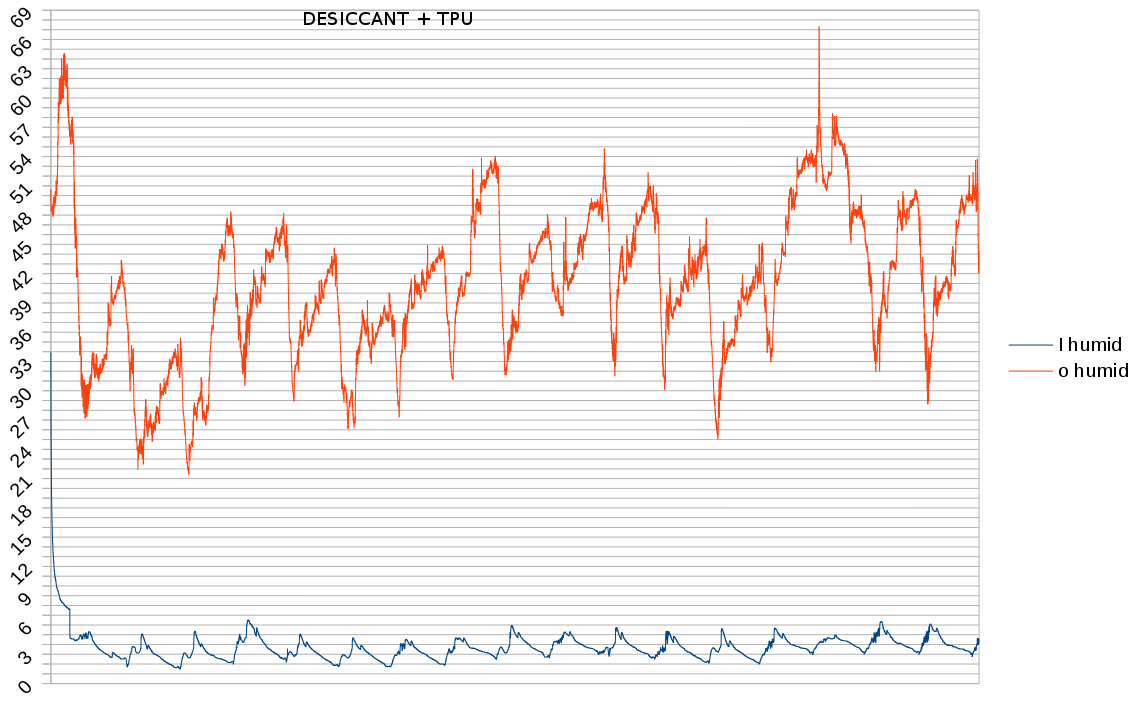
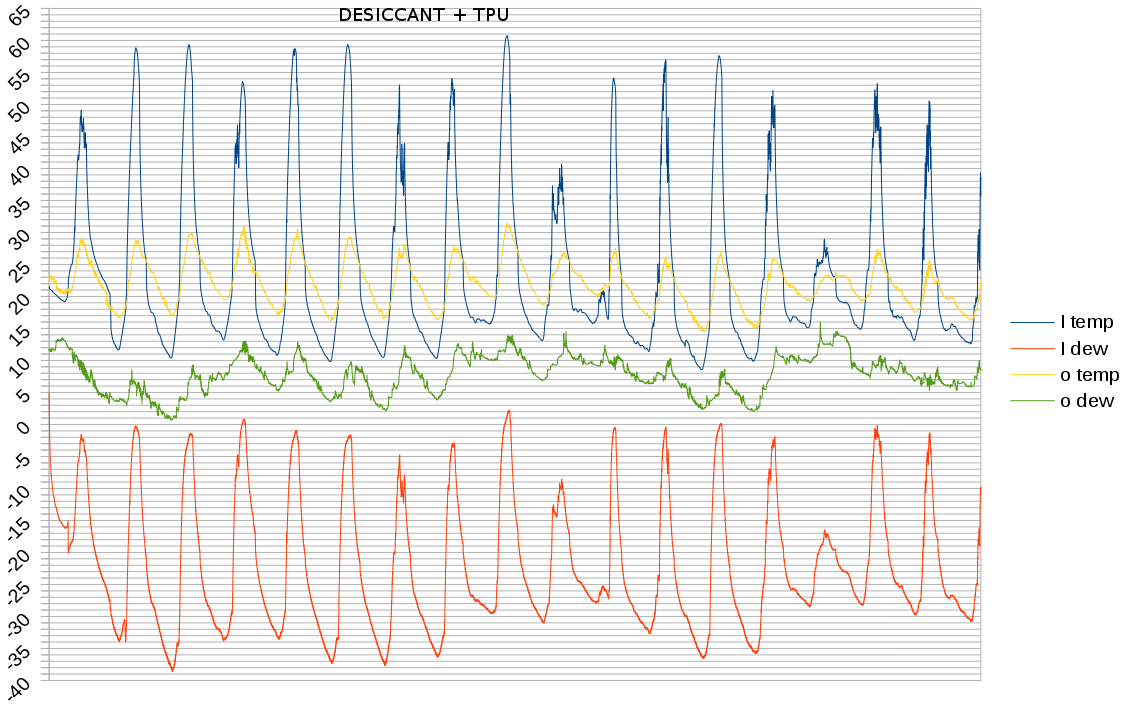
3 weeks with desiccant, TPU, air circulator & no pump gave as good a print as it ever got, from a roll which was wet from the factory.
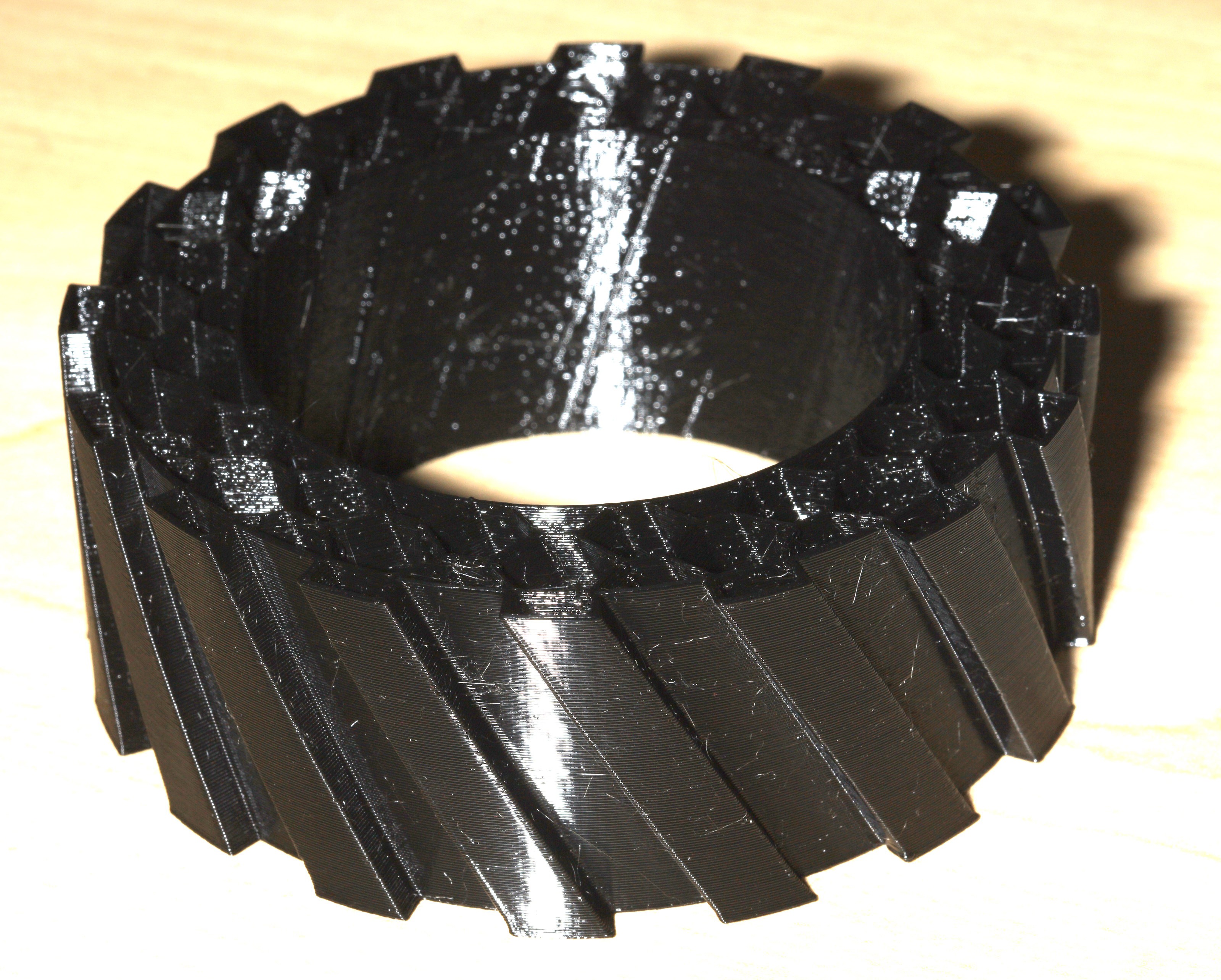
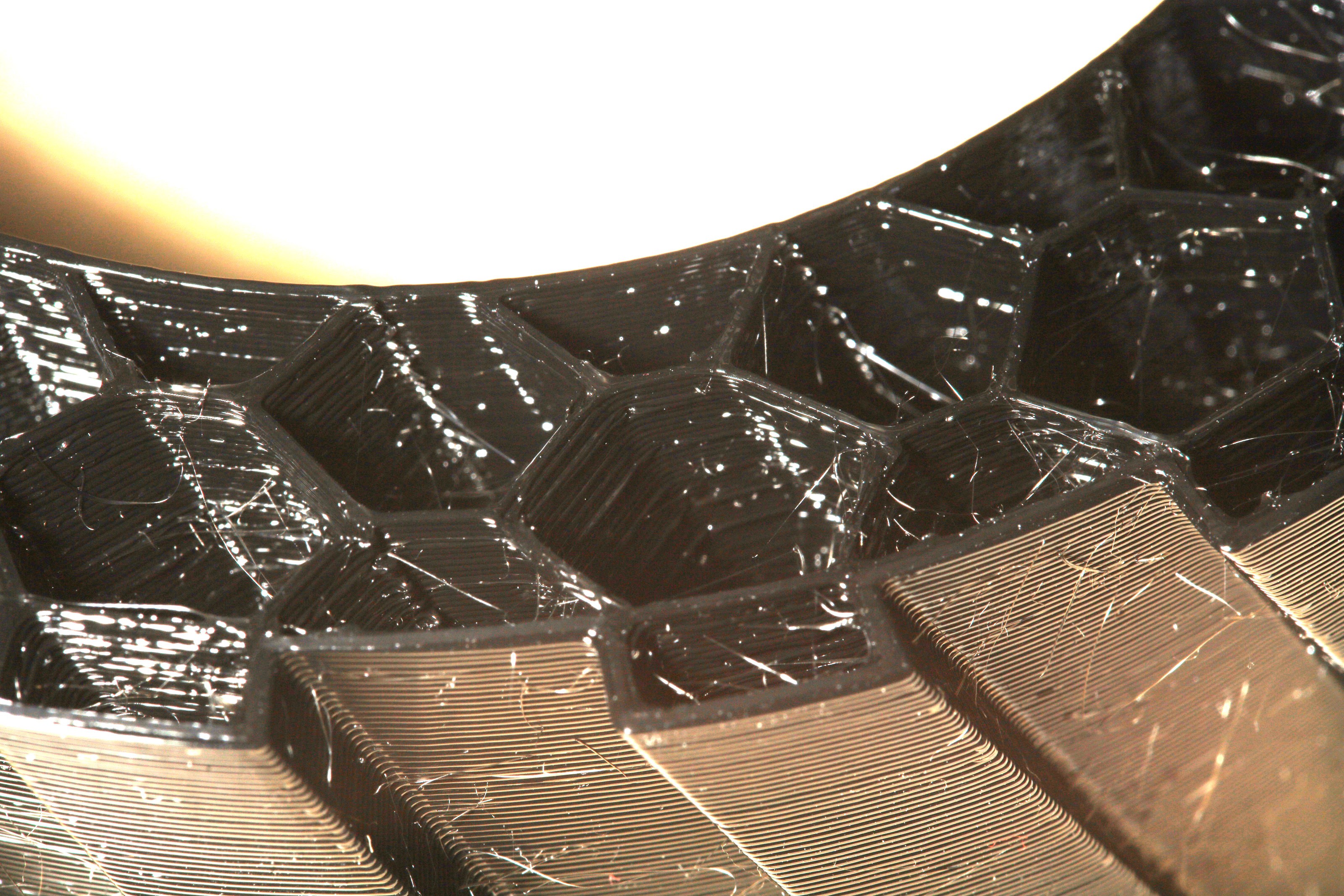
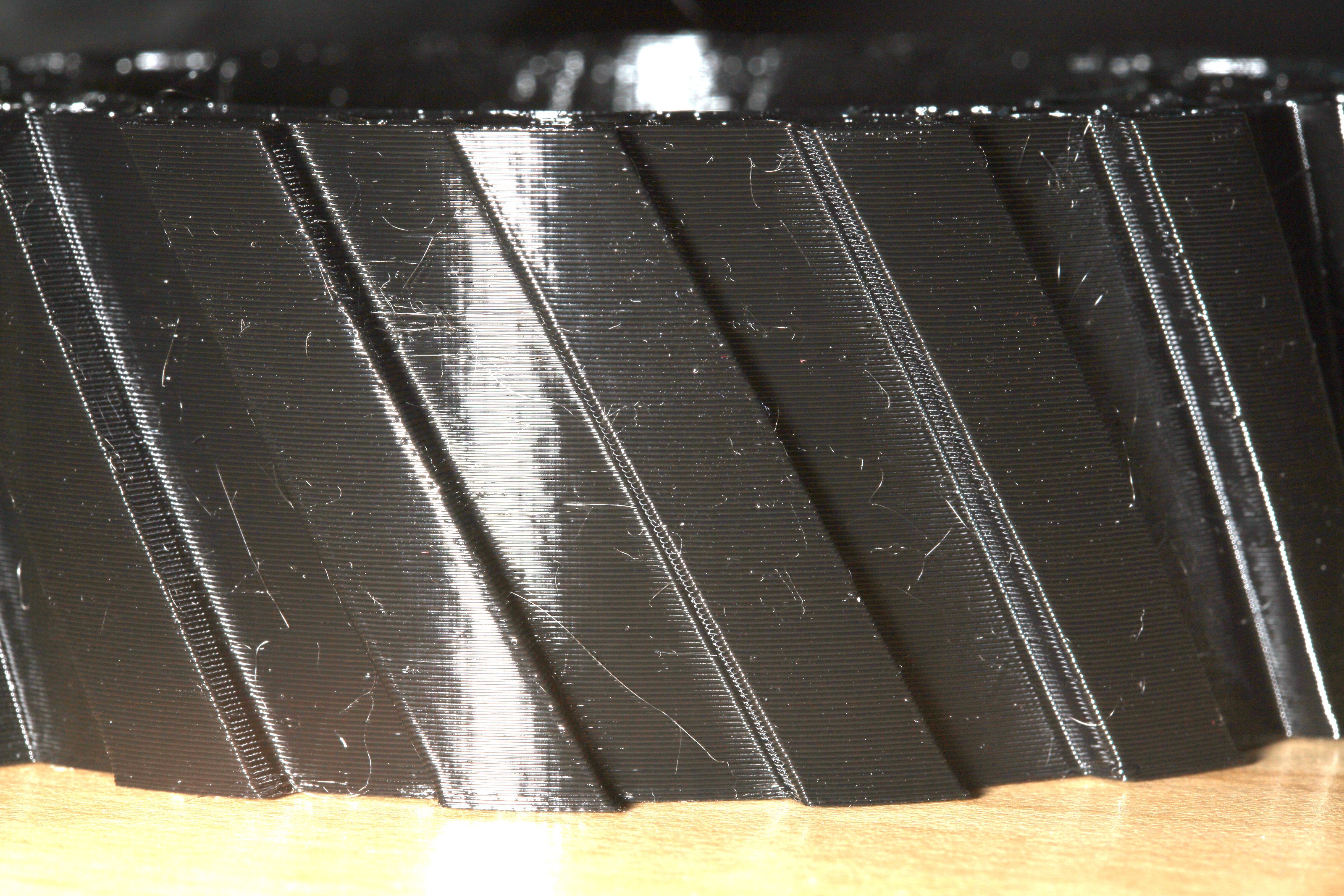
These were entirely different results than the last time the same test was done. Dew point never reached ambient but went way below what it did before. -40C is the standard marketing for desiccants. The calcium chloride didn't saturate. There were a few rainy days.
The most likely reason for the same test giving improved results is a different bag of desiccant being used or the air being completely sealed when it wasn't before.
The winner so far is an air tight container with circulation fan & desiccant. Maybe sunlight accelerates the drying. There's no way to dry the filament through heat alone & replacing air at opportune times. Maybe a solar powered peltier cooler could be a perpetual desiccant if only lions had the money. There's no need for any sensors except for logging data.
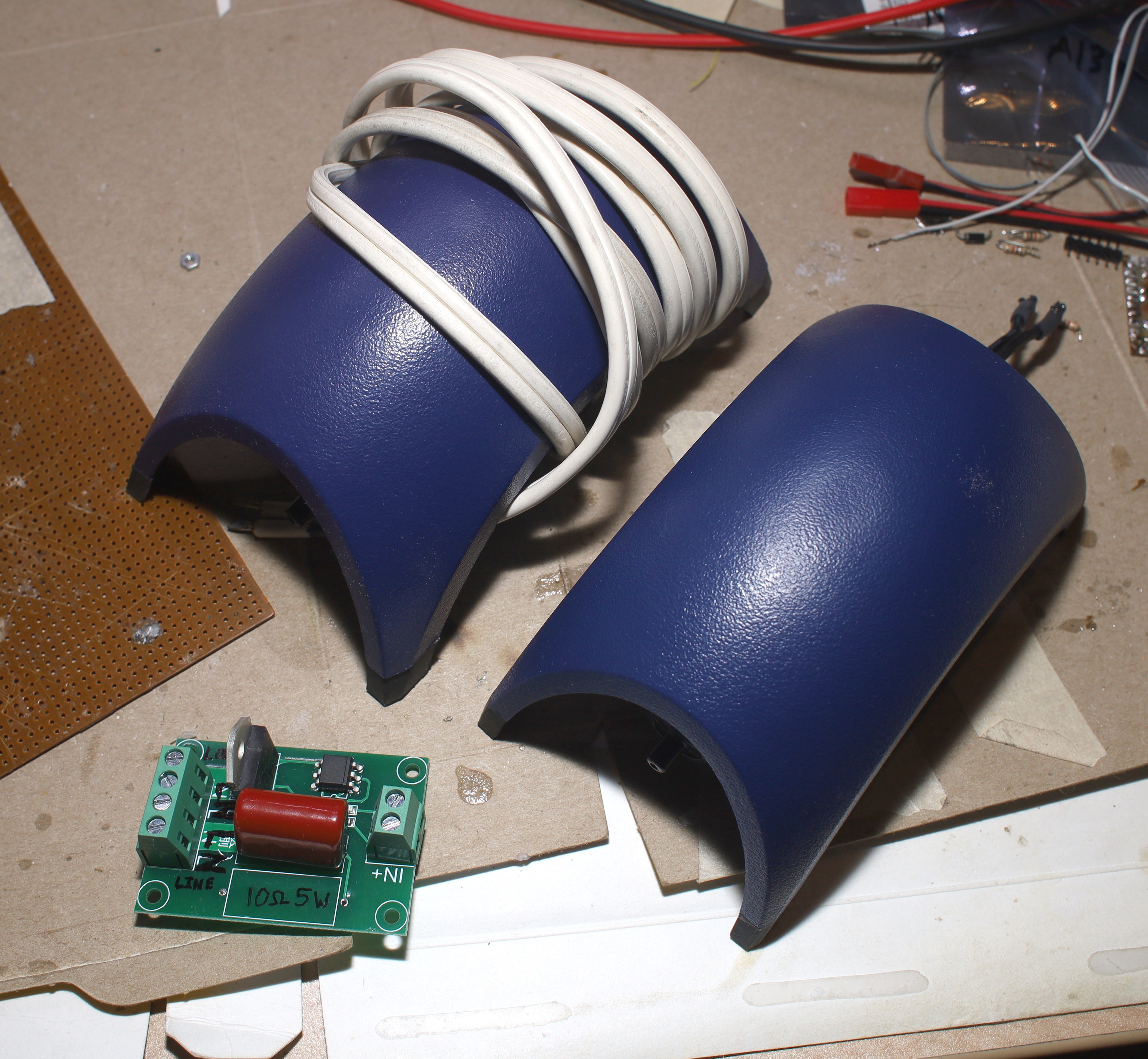
Thus 2 aquarium pumps & a triac join the scrap heap. That triac board never failed after it was hacked.
 lion mclionhead
lion mclionhead
Discussions
Become a Hackaday.io Member
Create an account to leave a comment. Already have an account? Log In.